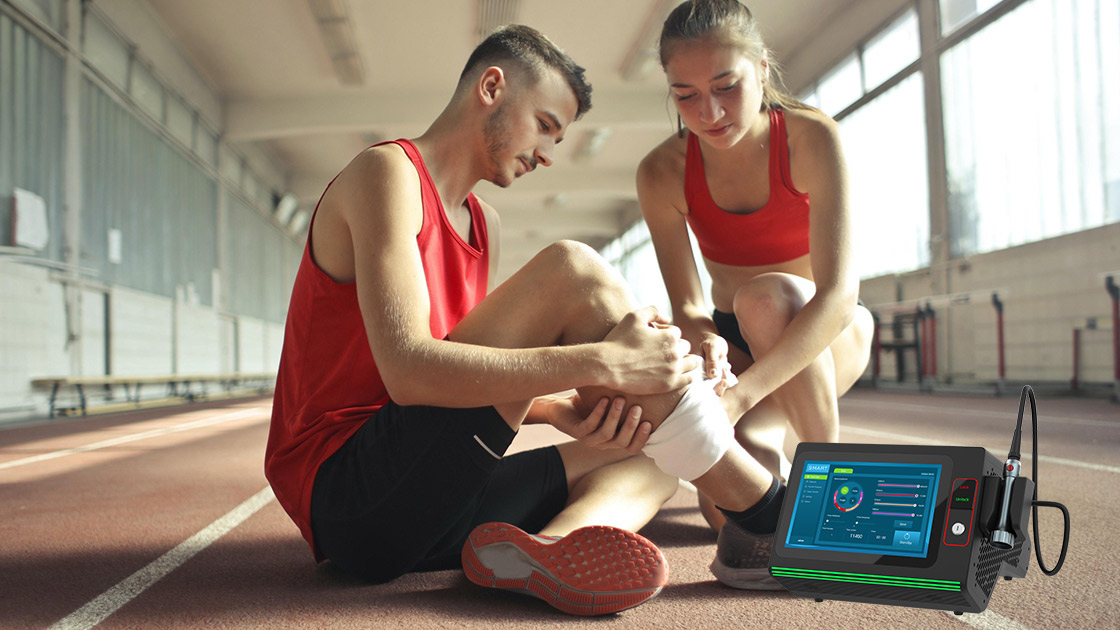Page Contents
Engaging in sports offers a wholesome approach to maintaining physical fitness, yet it does carry the potential for injuries that bring about substantial suffering and hinder performance. Based on statistical data, the United States witnesses approximately 3.5 million sports-related injuries annually. These injuries are prevalent and have a detrimental impact on one’s overall quality of life. The damaged cells stemming from these injuries triggers an inflammatory response in the vicinity of the affected area, often leading to the emergence of visible symptoms like redness and swelling. Regrettably, recurring inflammation can lead to conditions like arthritis and the deterioration of joints, ultimately curtailing your active days on the field. Fortunately, class iv laser therapy presents itself as an effective, secure, and prompt remedy for both inflammation and injuries.
Evolution of Class IV Laser Therapy
Class IV laser therapy directs light beams towards afflicted areas with the aim of diminishing discomfort and addressing harmed tissues. The integration of light in therapeutic practices has an extensive history, originating from the inception of lasers by a physicist in 1958. Subsequently, in the 1960s, Endre Mester’s observation that illuminating light on a rat’s shaved back prompted accelerated hair growth marked a pivotal moment in discovering the medical utility of laser therapy.
Since then, the popularity of laser therapy has surged, securing FDA approval, and now medical practitioners employ this methodology to manage injuries and ailments. Despite the potentially intense output of light from a Class IV laser, healthcare professionals precisely regulate the beams to exclusively target and neutralize impaired tissues. Consequently, Class IV laser therapy stands as a secure approach, carrying no inherent risks for patients or medical personnel.
Mechanism of Action of Class IV Laser Therapy for Injuries
Class IV laser therapy represents a non-invasive modality that fosters the restoration of tissues, muscles, and bones following injuries. The photons of laser energy deeply penetrate the skin in the vicinity of the injured site, a process during which the body absorbs them, promoting the regeneration and growth of cells. This therapy also triggers heightened blood circulation in the injured area, facilitating the delivery of oxygen, hydration, and essential nutrients, thereby expediting the healing process.
Furthermore, the utilization of Class IV lasers contributes to the mitigation of pain by reducing the presence of pain-inducing molecules in the targeted body region. Moreover, this form of therapy actively prompts the generation of endorphins, aiding in the management of pain. Through the alleviation of pain and inflammation, Class IV laser therapy expedites your recovery timeline, allowing you to swiftly resume your sporting endeavors.
Primary Sports Injuries Addressed by Class IV Laser Therapy
Class IV laser therapy offers a non-invasive solution to sports injuries that traditionally require surgical interventions or injections. The subsequent examples highlight three major sports injuries effectively manageable through Class IV laser therapy.
Ankle Sprains
Ankle twists, turns, or rolls can easily lead to sprains in anyone. Such incidents cause the rupture of the robust ligaments that support the ankle, resulting in discomfort. Recurrent sprains can even lead to more serious complications like arthritis, underscoring the importance of treating them promptly with Class IV laser therapy. This treatment not only promotes tissue regeneration and growth, but also diminishes inflammation in the heel, augments blood circulation, and accelerates the healing process.
Achilles Tendinitis
Situated at the rear of the leg, the Achilles tendon is prone to injury due to intense physical exertion or repetitive strain. Utilizing Class IV laser therapy aids in alleviating symptoms associated with Achilles tendinitis, such as pain and inflammation. By augmenting blood circulation to the affected tendons, Class IV laser therapy accelerates the healing process. Furthermore, this treatment mitigates nerve sensitivity and diminishes pain sensation.
Plantar Fasciitis
Constant physical strain placed on the feet by athletes and sports enthusiasts can lead to the development of plantar fasciitis. This condition weakens the plantar fascia, resulting in sharp heel pain. Class IV laser therapy expedites the healing process by deeply penetrating the heel, effectively reducing inflammation. Moreover, the therapy triggers an immune system response that combats inflammation and mitigates pain.
